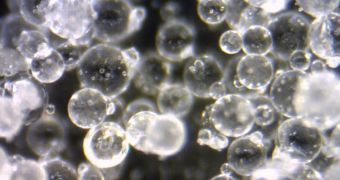Scientists at the US Department of Energy's (DOE) Lawrence Berkeley National Laboratory (Berkeley Lab) say that black carbon can also promote global warming by reducing the reflectance of snow and ice. Usually, sunlight gets reflected back to space in higher amounts during the winter.
The new discovery is unfortunately in tune with past climate investigations, and points to the same scenarios as those scientists have been warning about for quite some time now. In effect, black carbon is throwing the planet's radiation balance into disarray.
Black carbon, a chemical also known as soot, is usually released from power plants, diesel engines and residential cooking and heating, as well as forest fires, among many other sources. While naturally-occurring soot can be compensated for by Earth's defense mechanisms, the excess amounts remain.
Humans have long since surpassed Mother Nature in the amount of soot we release. Pollution has been contributing to reducing the amount of sunlight our planet reflects back to space for centuries, but now the situation is getting progressively worse.
Details of the new research effort appear in the latest issue of the top journal Nature Climate Change.
One would be tempted to think that soot is like other pollutants, only contaminating the areas around its point of origin. However, its structure and light weight ensures that it can remain airborne for prolonged periods of time, eventually settling down in areas thousands of miles from its point of origin.
Past computer models meant to assess the extent to which soot influences global warming failed to take into account the effects of black carbon on ice and snow albedo. The revised data will be included in the next assessment of the UN Intergovernmental Panel on Climate Change (IPCC).
“We were able to demonstrate clearly that soot in snow reduces its albedo [reflectance]. We also showed that as you increase the concentration of soot in the snow, you further decrease its reflectance,” Berkeley Lab Environmental Energy Technologies Division investigator Thomas Kirchstetter says.
“Another goal of our study was to validate the snow radiation modules used in general circulation models that predict anthropogenic climate change,” adds Kirchstetter's colleague and study co-author, Odelle Hadley.
“Theoretical calculations suggest that small amounts of soot, 10 to 100 ppb [parts per billion] by mass, can decrease the reflectance of snow 1 to 5 percent. This reduction contributes to climate change because it allow less of the Sun’s radiation to reflect back into space,” Hadley concludes.

 14 DAY TRIAL //
14 DAY TRIAL //